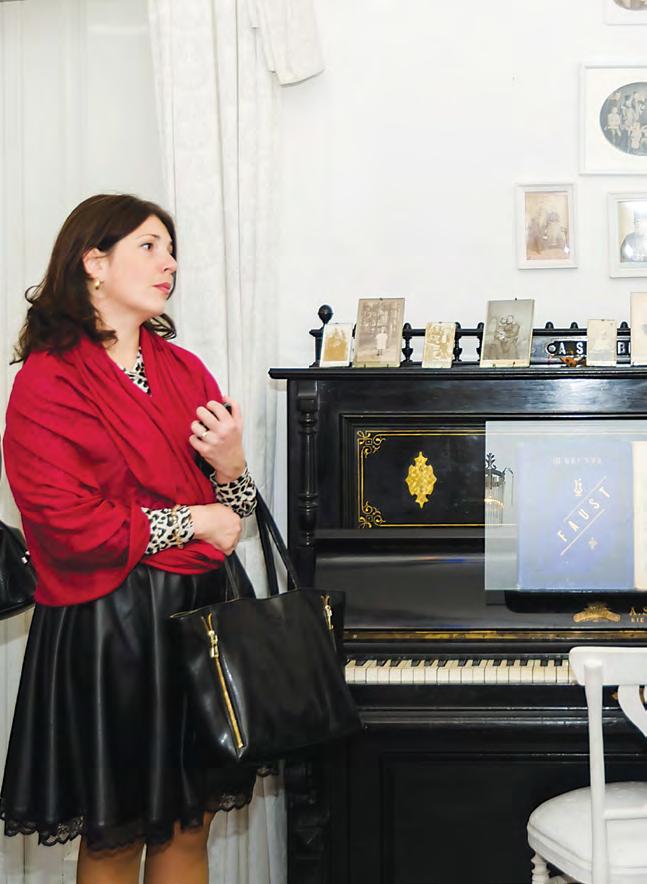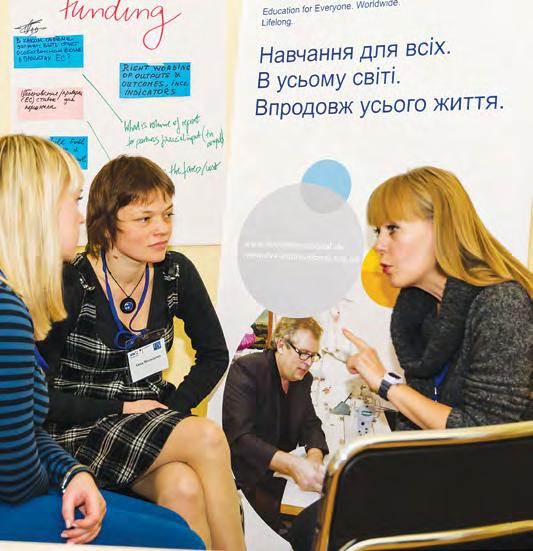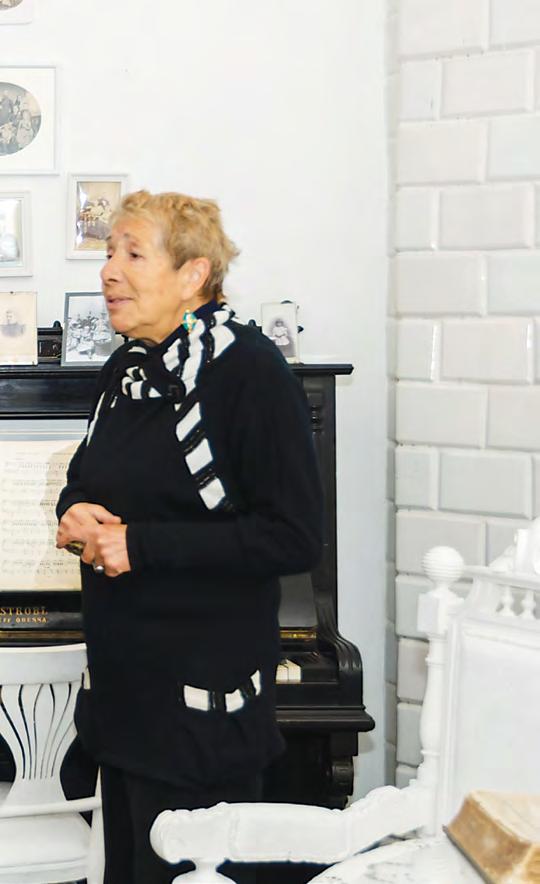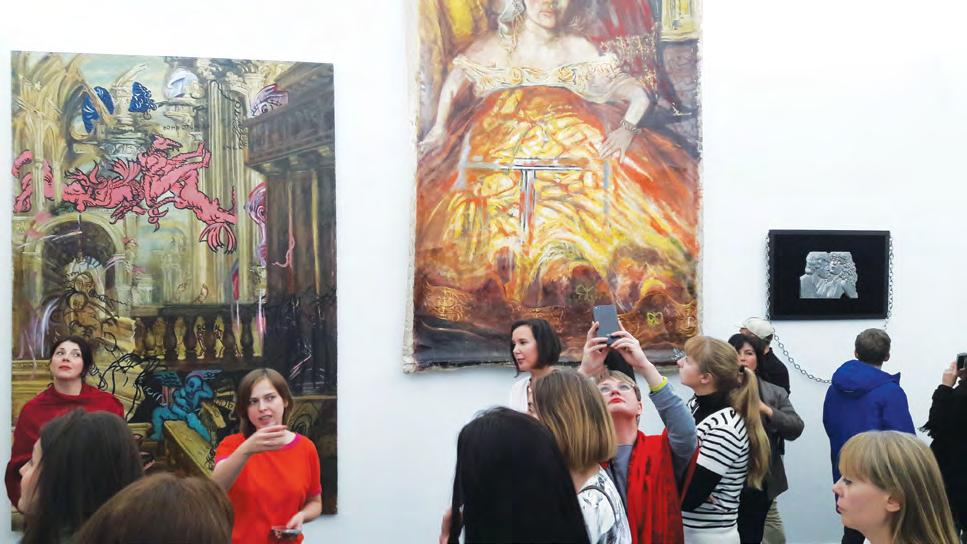
6 minute read
Olena Ostapchuk Gender approach to adult education
When it comes to gender issues, in practice, above all, this means taking into account the needs and interests of women and men of different social and age categories. These needs can be both shared and different.
GENDER APPROACH TO ADULT EDUCATION
Advertisement
Taking into account the gender dimension in the provision of services in adult education can improve its quality and relevance. This may also help to solve gender issues – those faced by men and women in the socio-cultural environment. In particular, women are in a more vulnerable position in the following areas: limited access to power and property; low level of female representation in top government positions (only 12% of women in the Parliament); women in the economic sphere own a small part of business in Ukraine and have fewer resources; women’s wages are lower than men’s by a quarter; unpaid housework (4-6 hours of extra work); women are most affected by all kinds of violence, etc. The problems that have a negative impact on men include: in Ukraine the average male life expectancy is 10 years less than the life expectancy of women; high mortality rate of men of working age; TB (70%), HIV/AIDS (60%), suicides are mostly among men; an increase in the number of men with various types of addictions; violent behavior of men and detention; violation of a father’s right to care for his child, etc. Both men and women lose out from these problems.
To recognize these needs, the segmentation of target groups is needed. According to what parameters do we define the target group for the project? According to needs? Problems? Social status? Age? Sex? Nationality? Health? Place of residence or other factors? For more efficient work, we should consider a combination of several factors. And the better we know the needs and interests of the target group (target groups), the more efficient the operation can be planned and implemented. Those working in the field of adult education must understand that they themselves are not their target audience and so the interests and needs of target groups need to be studied. A banal idea, but often projects are not implemented from the perspective of the needs of the target group but from the perspective of what we (or the organization) can provide the target group with. For example, some of the first services that libraries offered internally displaced persons were courses in the Ukrainian language. However, the needs of these people are much more variegated. Therefore, services that do not address the needs of the users (or potential users), and which are provided according to the capabilities of the organization will always be less effective than those which are sensitive to the interests of the people. This realization enables various cultural and educational institutions to find resources and implement a broader range of functions to meet the needs of people from different social and age groups.
Significant experience in training shows that people are not always clearly able to articulate their own needs, or to accept as valid other’s needs. Here is an example: During the training, in particular in newly created territorially integrated communities, when discussing the immediate needs of the community above all the word «roads» was voiced. The trainer asked what exactly they meant by this. Both men and women said «pavement (asphalt),» but after clarifying the daily activities of residents the following was revealed: it is not so much the pavement as it is the infrastructure that goes along with this pavement. In particular: • lighting, sidewalks, and pedestrian crossings – for safety reasons; • bike paths – because the vast majority of rural population uses bicycles; • bus stops, covered and with seating – as an area of
COMMUNICATION for the residents. This fact is very interesting because it reflects that there is a need not so much for a shelter from bad weather, but for communication and interaction.
It is important to understand these details and what exactly is meant by «roads» because it turns out even the best asphalt pavement itself is not capable of solving the real «infrastructure» needs of residents of small towns. When reflecting on the training, participants often emphasize the importance of understanding needs, think about their own desires, and discuss ways of their implementation.
The availability of resources and services, their availability for different target groups, accounting for users and service quality are also important to consider when working with the needs of the population. A certain Austrian example is worth noting: before reconstructing the Thurnstiege stairs, urban planning department specialists in Vienna had decided to find out who uses and who does not use these stairs and why. It turned out that due to health and mobility, parents with children, people with disabilities, and the elderly do not use this structure. To attract a wider range of users, the stairs were modernized in a way that helped to not only to meet the needs of people with limited mobility (through paved zigzag path), but also created a space for communication (through a convenient cover and use of landscape design).
By analogy to this example, we can reflect on the following question: representatives of which social groups cannot take advantage of educational or cultural services that are declared to be oriented to all? What are the reasons: time, duration, schedule, the content of services offered? Who is the primary user of services in informal adult education? How can we attract the least represented categories of women and men to participate in informal education? What communication channels to choose?
The implementation of the gender approach requires an understanding of the situation of women and men in a given socio-cultural environment, taking into account the practical and strategic needs of both sexes, gendersensitive behavior and the rejection of prejudices, and a critical attitude to gender stereotypes. Gender issues affect everyone: the increase in life expectancy; the opportunity to balance the professional and personal lives of men and women; participation in decision-making and allocation of resources regardless of gender; creating equal opportunities for career development; the question of responsible fatherhood and motherhood; partners sharing family responsibilities; reduction (eradication) of violence; forming a harmoniously developed personality, free of stereotypical attitudes about the role of men and women in society. Therefore, taking into account the gender approach in the concept of adult education has the potential to solve the problems of men and women, and to incite social change.
Olena Ostapchuk, expert of Youth NGO «Parity»

Освітня програма проекту «Замінимо мури відчиненими вікнами» включала такі тренінги та майстер-класи:
«Проектний менеджмент»
«Культурне розмаїття та освіта дорослих» «Роль культурних і освітніх ініціатив у процесах примирення на локальному рівні»
«Волонтерство для культурних і освітніх ініціатив» «Культурне підприємництво»

The educational program of the Replacing Walls Whis Open Windows Project included such workshops and master classes:
«Project Management»
«Cultural diversity and Education for Adults» «The role of educational and cultural initiatives in the peace building processes on the local level»









